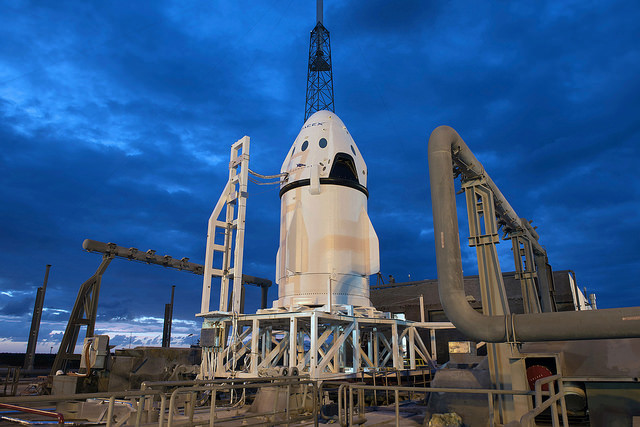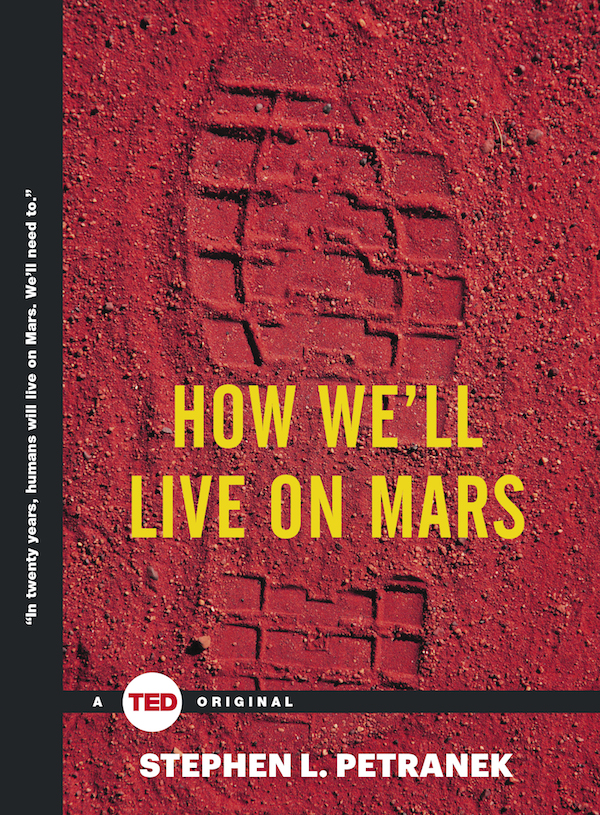For more than century, humans have imagined building colonies on Mars, and now settling the Red Planet is no longer a pipe dream — it’s something we might achieve in little over a decade. And many people, including the author of the new book How We’ll Live on Mars, believe our very survival as a species hinges on it.
“The point of going to Mars is to preserve the human species, forever,” author Stephen Petranek, former editor-in-chief of Discover, told me over the phone. “What’s really important is to get people off this planet and become a spacefaring society.”
In the concise space of less than 100 pages, How We’ll Live on Mars delivers an elegant overview of the history, science and technology relevant to Martian colonisation. But more than a technical primer, Petranek’s new book is a manifesto.
He argues that we’ve had the tools to get to Mars for decades, we simply haven’t pursued the opportunity. Yet in the past five years, the notion of living Mars has once again sparked public imagination, with private space companies offering us a new window to the stars. Now that it’s become clear that we’re really going to ship humans off to Mars, Petranek says we need to start considering the enormous potential (and pitfalls) that await us out there.
From NASA to SpaceX

SpaceX’s Crew Dragon spacecraft, designed to ferry humans to and from space. Image via SpaceX
Scientists and engineers have been discussing how to get humans to Mars since the 1940s, when former German rocket scientist Wernher von Braun wrote Das Marsprojekt, a 91-page treatise that envisioned a fleet of Mars-bound spacecraft, built at a space station in Earth’s orbit with materials and equipment launched up by reusable rockets.
As the first study on the technical feasibility of a manned mission to Mars, von Braun’s work captivated the American public. But the dream of putting boots on the Red Planet was shelved in early 1970s, when Nixon instead chose to focus NASA spending on the Space Shuttle program.
Had Nixon committed the United States to Mars, we’d probably have a base there now. Instead, the wildly expensive shuttle threw US space exploration into a dark, passionless, 40-year void. Only in the past five years has America begun to emerge from the shuttle’s crippling legacy, thanks the arrival of private rocket companies and — most importantly in Petranek’s view — the leadership of Elon Musk.
“Everything we need to go to Mars has been around for a long time,” Petranek told me. “It’s only a matter of willpower. And now, there’s somebody who wants to go to Mars. If you look at the mission statement of SpaceX, it’s that this company was formed to bring people to Mars.”
Petranek makes no secret of his admiration for Musk, which bleeds rather heavily through the pages of his new book. But whether or not you’re a Musk fanboy, it’s hard to deny that SpaceX has made enormous progress toward getting humans to Mars in a very short period of time. The book highlights the company’s ongoing effort to develop a reusable rocket system and manned Dragon spacecraft that can carry more humans and supplies over long distances than ever before. These technologies are still a work in progress, but under the auspices of a multibillionaire who tends to put his money where his mouth is, it seems more likely than ever that the rockets and spacecraft we need to colonise Mars are coming.
And as Musk’s intentions to get to Mars have become crystal clear, we’ve also borne to witness an astounding 180 at NASA.
“One of the most fascinating things that happened to me while writing this book was watching the shift in attitudes at NASA as SpaceX became more successful,” Petranek said. “I could not get anybody at NASA a year ago to say when and if we’re going to Mars. Now all of a sudden, NASA has appointed a Mars administrator, and announced that we’re going to Mars in the 2030s.”
The New New World
In perhaps 20 years, colonial transport systems could be shipping dozens, if not hundreds of settlers off to the Red Planet. Petranek likens these early space colonists to the first European settlers in the New World. The analogy is surprisingly good: Like the first British colonists at Jamestown, our Martians pioneers will find themselves living in austere conditions on a remote frontier, utterly occupied with the task of basic survival, and (in all likelihood) with no means of returning home.
Of course, Martian settlers will have much more technology at their disposal, which they will need in order to face the daunting environmental challenges: temperatures far below freezing, no liquid water, and practically no atmosphere, to name a few. But in his survey of the technologies we’ll need to survive — some are already space-ready, others are hypothetical — Petranek makes it clear that survive we can. Sure, those first settlers may need to hunker down below-ground to avoid being eaten alive by cosmic radiation, and yes, they will need to wear pressure suits at all times, and maybe they will begrudgingly add insect protein to their diets. But as history has proven, the promise of a new world is incredibly alluring.
“Once a Mars base is reasonably functional, people will flock there,” Petranek writes. “A simple look at the extraordinary number of people on Earth who migrate from country to country each year indicates that huge population on Earth wants to go where the future seems brighter. It’s part of the human spirit.”

Among the fascinating subjects covered in How We’ll Live on Mars are the expected treatise on rocket science and resource-recycling space habitats, a discussion of the future Martian economy (Petranek envisions everything from a gold-rush of asteroids miners to the very first space-based reality TV shows), and an exploration of how we might eventually terraform the Red Planet into a warm, breathable, green one.
Many people see a human settlement on Mars — no less a booming entertainment economy — as a diversion from the very serious social, economic and environmental problems facing planet Earth. Petranek, however, believes that the tremendous feat of settling another world, and the survival lessons we learn out there, will bring a new (and much needed) perspective to problem of sustaining life back home.
“A completely different view of the Earth, seen from a distant vantage point, will perhaps inspire hundreds of thousands of people,” Petranek writes. “A wider sensibility and appreciation of how all things are woven together into a finite ecology will emerge, and humans may gain a far more sophisticated understanding of the meaning of life. Voyaging to Mars may give us the insight to see our planet in true perspective.”
Petranek’s new book, How We’ll Live on Mars, is available today on Amazon.
Picture: NASA
